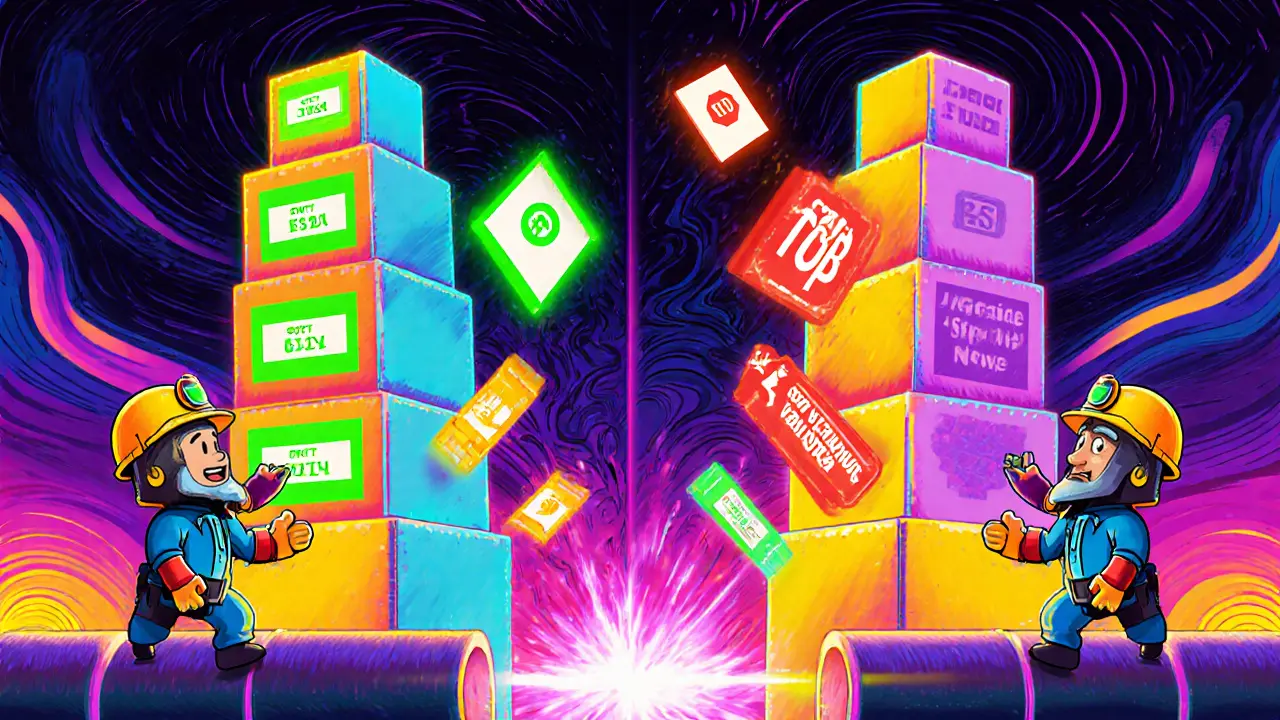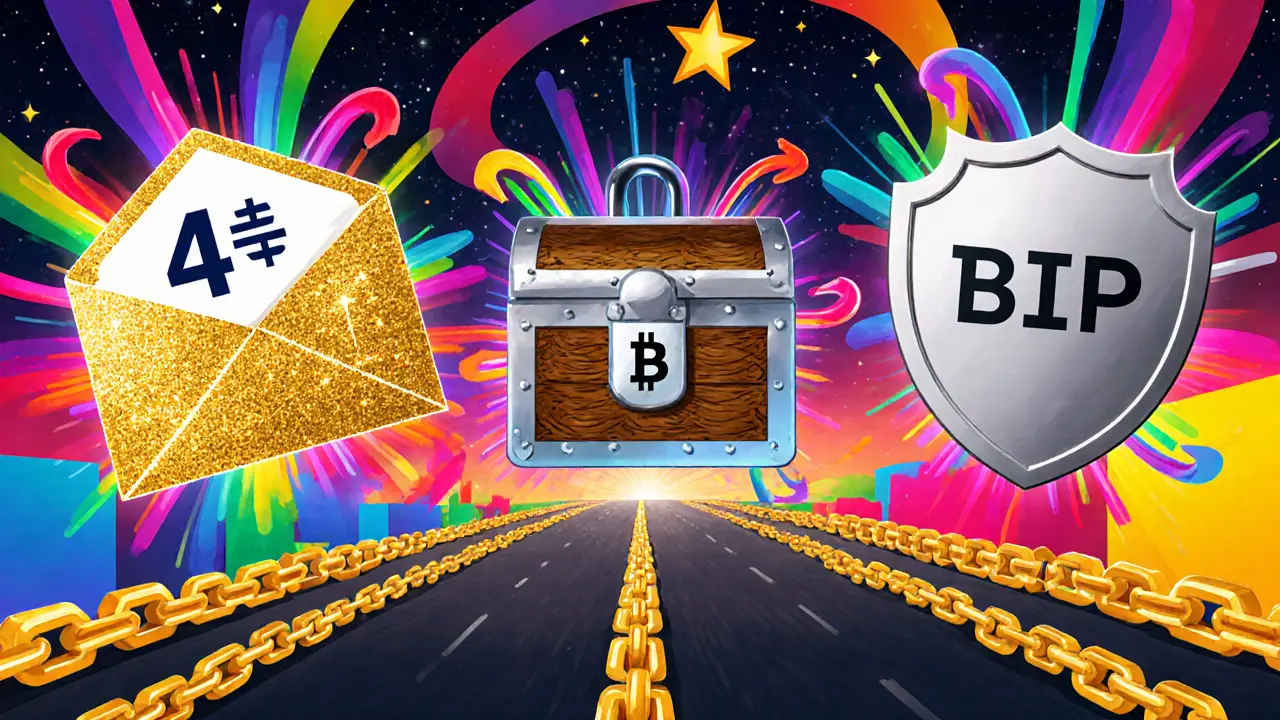Soft Fork Compatibility Checker
How It Works
Enter your proposed rule change. The tool checks if the new rule is more restrictive than the old rule - which is essential for backward compatibility in soft forks. Remember: For backward compatibility, the new rules must be a strict subset of the old rules.
When a blockchain needs a new feature but can’t force every node to upgrade instantly, Soft fork is the go‑to solution. A soft fork is a protocol upgrade that tightens the existing rule set, creating a subset of the original consensus rules while staying compatible with older clients. This design lets the network evolve without the chaos of a full split.
Understanding soft fork backward compatibility is crucial for anyone building or using blockchain services, because it determines whether older wallets keep working after a change is rolled out.
What Is Backward Compatibility in a Soft Fork?
Backward compatibility means that a node running an older version of the software can still validate blocks and transactions produced under the new rules. The key trick is that the new rules are more restrictive, not looser. Anything that satisfies the stricter rules automatically satisfies the older, broader set. Think of it like a tighter filter: the water that passes through the new filter would have passed through the old one as well.
How the Validation Mechanism Works
When miners start building blocks that obey the new, stricter criteria, those blocks carry the same basic structure as before-same header fields, same proof‑of‑work. A legacy node checks the block against the older rule set, finds it valid, and adds it to its chain. An upgraded node runs an extra check (for example, a new script verification rule) before accepting the block. Because the extra check only rejects blocks that would already be illegal under the old rules, the two groups of nodes stay in sync.
Soft Fork vs. Hard Fork: A Direct Comparison
| Aspect | Soft Fork | Hard Fork |
|---|---|---|
| Rule Change Direction | More restrictive (subset) | More permissive (superset) |
| Legacy Node Compatibility | Yes - continues to validate blocks | No - rejects new blocks |
| Typical Consensus Requirement | Majority of miners/validators signal support | Supermajority or near‑universal upgrade |
| Risk of Chain Split | Low - network stays unified | High - can create permanent forks |
| Use Cases | Signature tightening, block‑size tweaks, new script types | Fundamental consensus redesign, new transaction models |
Real‑World Soft Forks That Shaped Bitcoin
Bitcoin’s history offers two flagship soft forks that illustrate the concept perfectly.
- Segregated Witness (commonly called SegWit) moved signature data out of the transaction body, effectively expanding the usable block size from 1 MB to about 4 MB. Older nodes kept working because they simply ignored the new witness data, treating the transaction as still valid under the old rules.
- Pay‑to‑Script‑Hash (P2SH) let users lock funds to a hash of a script, deferring the actual script reveal until spending. This was a backwards‑compatible way to add complex scripting without breaking existing wallets.
Another notable soft fork is BIP66 (Bitcoin Improvement Proposal 66), which enforced strict DER encoding for ECDSA signatures. The change hardened security by rejecting malformed signatures, and because the new format is a stricter subset, older nodes still accepted the transactions.

Activation Process: Miner Signaling and Consensus
Soft forks usually roll out through a signaling phase. Miners embed a special flag in the blocks they mine (often in the version field) to announce support. Once a pre‑defined threshold-commonly 95 % of recent blocks-reaches that flag, the new rules become active.
This “soft‑fork activation” lets the community test the change on a live network before it locks in. If signalling stalls, the upgrade can be postponed or aborted without any permanent split.
Benefits of Soft Fork Backward Compatibility
- Network stability: No forced upgrade means users and businesses can stay online while gradually updating.
- Security improvement: Stricter validation (as seen with BIP66) closes known attack vectors without disrupting service.
- Lower coordination cost: Developers only need a majority of miners, not every node, to adopt the change.
- Preserves market confidence: Avoids the price volatility that often follows a hard fork.
Limitations and When a Hard Fork Is Needed
Because a soft fork must stay within the bounds of the old rule set, it cannot introduce entirely new transaction structures or replace the consensus algorithm. Major shifts-like moving from proof‑of‑work to proof‑of‑stake-require a hard fork. Also, legacy nodes don’t get the new features, which can create a functional gap: they can still send and receive coins, but they miss out on lower fees or higher capacity.

Future Directions for Soft Forks
Developers are experimenting with more nuanced signaling schemes, such as threshold‑based activation that adapts to network conditions, and virtual voting where validators vote on‑chain without needing to mine blocks with special flags. These innovations aim to reduce the coordination overhead and make soft forks usable for more ambitious upgrades while preserving backward compatibility.
Key Takeaways
- A soft fork tightens rules, making new blocks a subset of old ones.
- Legacy nodes stay functional, preventing chain splits.
- Activation relies on miner (or validator) signaling, not universal upgrades.
- Examples like SegWit and BIP66 show real security and scalability gains.
- Hard forks are still necessary for radical protocol overhauls.
Frequently Asked Questions
What exactly makes a soft fork backward compatible?
The new rules are stricter, meaning any block that follows them also satisfies the older, looser rules. Older nodes therefore still see the block as valid.
How do miners signal support for a soft fork?
Typically they set a specific bit in the block version field. When a defined percentage of recent blocks carries that bit, the upgrade activates.
Can a soft fork increase the block size?
Yes, but only by moving data to a part of the block that older nodes ignore. SegWit did this by separating witness data, effectively raising the usable block capacity.
Why would a network choose a hard fork instead?
When the desired change cannot be expressed as a stricter subset-such as changing the consensus algorithm or adding new transaction types that require different validation logic-a hard fork is the only path.
Do legacy nodes lose any security after a soft fork?
Not directly. Security improvements (like stricter signatures) are enforced by upgraded nodes, while old nodes continue to accept blocks that are still valid under the original rules. The network as a whole becomes more secure.

Write a comment